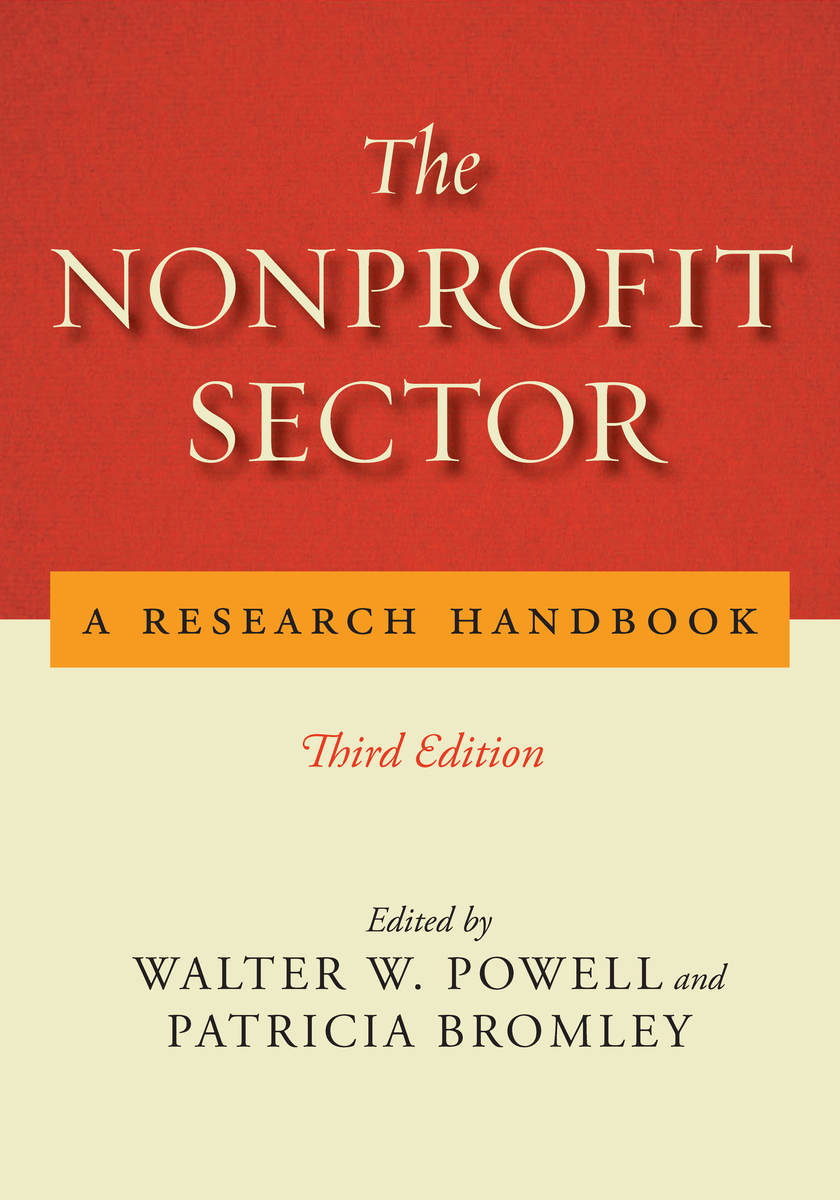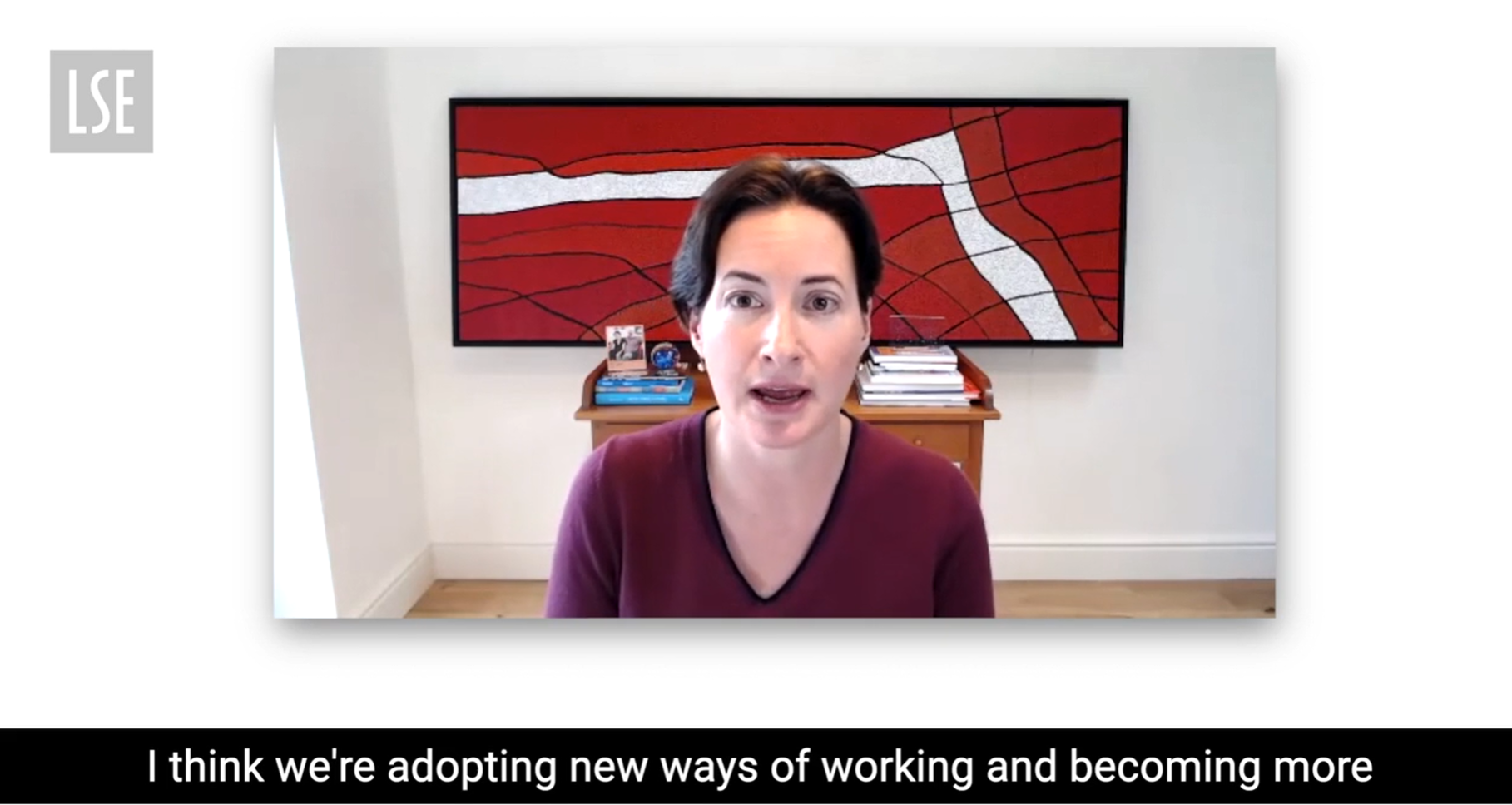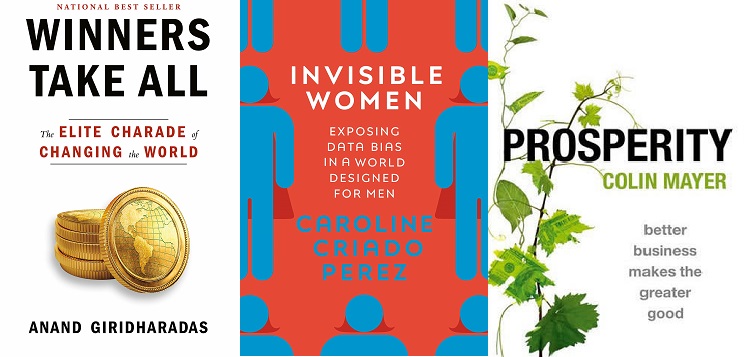This blog post appeared originally on the HistPhil web publication here. (Posted on April 13, 2020 by HISTPHIL) The blog has been shared on the Social Business Hub as a reference to the seminar hosted by the Marshall Institute on the 27th of October. Professors Woody Powell and Maitreesh Ghatak reflected on a few chapters of the third edition of the Nonprofit Sector: A Research Handbook. The recorded session can be accessed here and viewed below.
Editors’ Note: Aaron Horvath and Walter Powell introduce their chapter in the third edition of the Nonprofit Sector: A Research Handbook (Stanford University Press, 2020), edited by Powell and Patricia Bromley. The Handbook, first published in 1987 and then revised in 2006, has long served as an important resource for the sector. But this edition does not offer a revision of those earlier volumes. Rather, it offers new chapters by a largely novel set of authors (many of them young scholars) as well as a new structure. (HistPhil co-editor Benjamin Soskis has contributed a chapter on the history of associational life and nonprofits in the United States). Instead of framing the volume around specific sectoral domains, such as education or healthcare, it is largely structured around critical conceptual questions surrounding such themes as accountability, equity, advocacy, democracy, power and globalization. In this forum, several of the authors of chapters in the Handbook introduce their contributions.
Writing his President’s Message for the 1920 Rockefeller Foundation Annual Report, George E. Vincent reflected on the recent influenza pandemic, along with a slate of other “less perfectly understood” diseases that “do not respond readily to control efforts”:
“A track railway spends more money on train inspection than on wreck crews. The average automobile owner is on the watch for signs of motor trouble and does not wait until there is a breakdown. The factory manager looks solicitously after his machines and does all he can to guard against interruptions in production. The human body, which is vastly more complex than any machine, is in need of vigilant care and frequent examination. Yet for the most part it is neglected until pain and disability sound an unmistakable alarm. Then the doctor is called in and too often is expected to do the impossible […] The idea of prevention, then, will have limited influence until it is accepted […] as a guiding principle in individual lives. Education of whole communities and nations, changes in habits of thought, a new attitude toward disease and toward medical service, are essential conditions of progress.”

Machines. Bodies. Vigilance. Examination. Principle. Education. Attitude. Progress. One might note how Vincent equates the human body to the familiar imagery of the Machine Age. One might also note how Vincent, without a ready palliative at hand, moralizes the idea of care for oneself, viewing medical care as largely a habit of mind—much like industriousness, abstemiousness, and faithfulness. As the old saw goes, an ounce of prevention is worth a pound of cure. Indeed, recording notes in his diary after meeting with Dr. Victor Heiser (a prominent physician whose accomplishments included progress against hookworm and malaria), Vincent harbored little optimism about the public health crisis: “Influenza situation. Nothing the Foundation can do in research or in relief.”
One hundred years later, humanity finds itself, once again, tormented by uncontrollable pestilence. The largest foundation of our time, The Bill & Melinda Gates Foundation—now the philanthropic torchbearer of public health, much like the Rockefeller Foundation before it—has become a central player in funding public health research. Discussing in his blog the eerily familiar challenges of COVID-19, Bill Gates struck a somber but nevertheless optimistic tone:
Drug discovery can […] be accelerated by […] applying new screening techniques, including machine learning, to identify antivirals that could be ready for large-scale clinical trials within weeks […] The world also needs to invest in disease surveillance, including a case database that is instantly accessible to the relevant organizations and rules that require countries to share their information. Governments should have access to lists of trained personnel[…]who are prepared to deal with an epidemic immediately […] One of the main technical challenges for vaccines is to improve on the old ways of manufacturing proteins, which are just too slow for responding to an epidemic. We need to develop platforms […] so regulatory reviews can happen quickly, and that make it easy for manufacturers to produce doses at a low cost and a massive scale.
Machine learning. Scale. Surveillance. Data. Information. Technical. Platforms. Speed. For Gates, the solution is within reach. So long as enough data and collective knowledge can be efficiently wrangled using the latest techniques, cures can be found, deaths can be prevented, and human suffering can be diminished.
Two foundations—both built on the most sizable capitalist fortunes of their time, both among the most formidable public health funders of their time—two distinct ways of thinking about the world-rattling pandemics of their time. Even as faith in philanthropic meliorism persists, the mantras, metaphors, and tools through which philanthropists grapple with social problems have evolved considerably. What explains the transformation?
In chapter three of the new, third edition of The Nonprofit Sector: A Research Handbook, “Seeing Like a Philanthropist: From the Business of Benevolence to the Benevolence of Business,” we chart the transformation in philanthropic visions—the prevailing ideas that help organize and orient a field’s activities by providing an ideational order of what philanthropy can and should do. We trace these visions from the late 19th through the early 21st centuries. Our contribution, in short, begins with the following point: there is nothing inherent or inevitable about how philanthropic organizations understand and act on the world around them. Both to historically inclined scholars of foundations specifically and to scholars of philanthropy more generally, this statement comes as little surprise. For years, observers of US philanthropy have ably narrated the trajectories and transformations of one of nation’s most powerful and yet enigmatic sectors. But whereas past scholarship has tended toward idiographic accounts, focused on particular cases, our chapter has (as sociological scholarship is wont to do) more nomothetic ambitions. What general principles can we derive to explain the transformation of US philanthropy over the last 150 years? What are the regularities, recurrences, and rhythms of philanthropic change?
To answer these questions, we marshal ideas from organizational sociology and the sociology of knowledge. We offer a theory of transposition—the process by which elements (such as people, practices, ideas, organizational forms, etc.) are moved from one social domain to another. These movements can manifest in many ways.
***
In one sense, as the contrast between Vincent and Gates suggests, philanthropic visions have long mirrored the origins of philanthropic wealth. One of the most robust patterns we find in following the evolution of American philanthropy is that the methods, modes, and concerns of wealth generating activities are closely evident in associated wealth distributing activities. The phenomenon is especially pronounced in our current era when discussions of philanthropic work seem only a few find-and-replace keystrokes away from discussions of venture capital, tech startups, and financial markets. Accordingly, as successive generations of industrial wealth move into philanthropy, the idée fixe of one domain finds a comfortable home in another. We illustrate how changes in the forces of production have shaped the leading edge of philanthropy. Early on, wealth came from extractive industries, then from mass production and manufacturing, then science and medicine, and more recently from technology and algorithms. The organizational models for philanthropic institutions were drawn from these respective industries.
Yet, in another sense, the movement from industry to philanthropy does not always (or even often) occur unencumbered. The popular press, politicians, and the public looked much more askance at philanthopy in the late 19th and early 20th centuries than in the 21st, at least until of late. Consequently, we periodize our eras of philanthropy at moments of intrusion.
First, as the public inquiries in the 1910s, 1950s, and 1960s demonstrate, many people were uncomfortable with the movement of capitalist and plutocratic influences from an extractive domain to a distributive one. The mid-century political reappraisal of philanthropic work forced many foundations to consider their public role in a new light. Around the time of the Tax Reform Act of 1969, foundations became keenly aware of the need to maintain public confidence and legitimacy. Drawing from the burgeoning world of government policy analysis (spurred, in part, by Johnson’s Great Society initiatives), foundations began taking measurement and evaluation seriously. Sociologist and Russell Sage Foundation president Orville Brim wrote in “Do We Know What We Are Doing?” (1973) that, because the public “has a stake in the success or failure of foundations” it was incumbent on foundations to demonstrate “whether the public was getting its money’s worth.”
Second, despite asseverations to the contrary, new generations of philanthropists are nevertheless influenced by the organizational modes and precedents set by prior generations of philanthropists, even when the newcomers profess to be changing them. This intertwining of the past and the present is a pronounced theme in our chapter. Although the pool of American foundations has grown substantially, joined by new sources of wealth, new social goals, and new methods for distribution, the organizational forms and practices of modern foundations bear a remarkable likeness to their philanthropic predecessors. To be sure, the growing popularity of the LLC form in recent years challenges some longstanding ideas about how philanthropic work would be conducted and made accountable to the public. Even then, these organizations fall into a similar mold with staff titles and programmatic concerns reflecting those common in more “traditional” 501(c)(3) philanthropic outfits. New entrants in the field carry new ideas, but they find the vestiges of philanthropy’s past hard to shake. And old foundations aren’t impervious to change themselves. Even as they bear the imprint of their founding missions and carry the inertia of past actions and decisions, many have proven remarkably flexible, adopting new discourses and methods pioneered in organizations far younger than their own.
In yet another sense, philanthropic foundations are not merely shaped by the world outside them; they have shaped the world we now inhabit. They have drawn attention to pressing problems in distant parts of the world and mobilized support for disenfranchised communities in our backyards. The pursuits of many philanthropic beneficiaries (as well as would-be beneficiaries) have been shaped—for better or worse—by the practices and goal orientations of those supporting their work. The influence of foundations even curves back into the industrial enterprises from which many of its ideas and practices originated. Just as foundations have drawn on the concerns and practices exhibited by major corporations, these same corporations—through CSR and other pro-social activities and claimsmaking—have come to reflect the concerns and practices of their foundation counterparts as well.
We detail how these social forces—the inertia of history, the resistance of politics, the generative force of modern industry, and the substantial influence of foundations themselves—become intertwined within the field of philanthropy. This is, of course, no small undertaking. Further developing a sociology of knowledge approach to philanthropic history will require us to consider the rich historiography of American philanthropy in a new light with an eye toward the underlying social processes that animate critical moments in the sector’s past. For organizational sociologists, the history of organized philanthropy provides a rich setting from which to understand the intersection of social forces and venture new answers to age old questions: where do new organizational forms come from and why do they change? For historians of philanthropy, the lens of organizational sociology may draw attention to previously unseen patterns and attract interest in moments that deviate from expected trends while providing a new vocabulary through which to make sense of historical regularities and irregularities.
Our current moment of crisis is not unlike those that philanthropists have faced before. Yet, in the century that has passed since the 1918 pandemic, philanthropists have come to understand and engage with the problems of our time in an entirely new way. We hope the lens offered by our chapter in the Nonprofit Sector: A Research Handbook will help us to make sense of the such profound shifts in philanthropic visions.
-Aaron Horvath and Walter W. Powell
Aaron Horvath is a PhD candidate in Sociology at Stanford University and is affiliated with the Stanford Center on Philanthropy and Civil Society. Walter W. Powell is Jacks Family Professor of Education, and Professor of Sociology, Organizational Behavior, Management Science and Engineering, and Communication at Stanford University. He was a founding co-director and is now co-director of the Stanford Center on Philanthropy and Civil Society.





